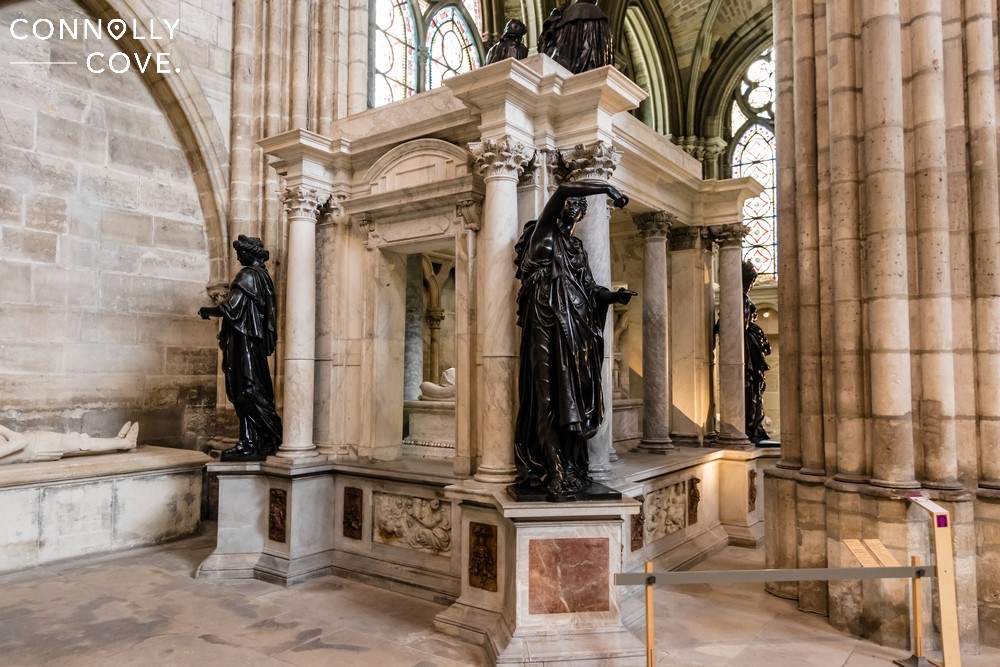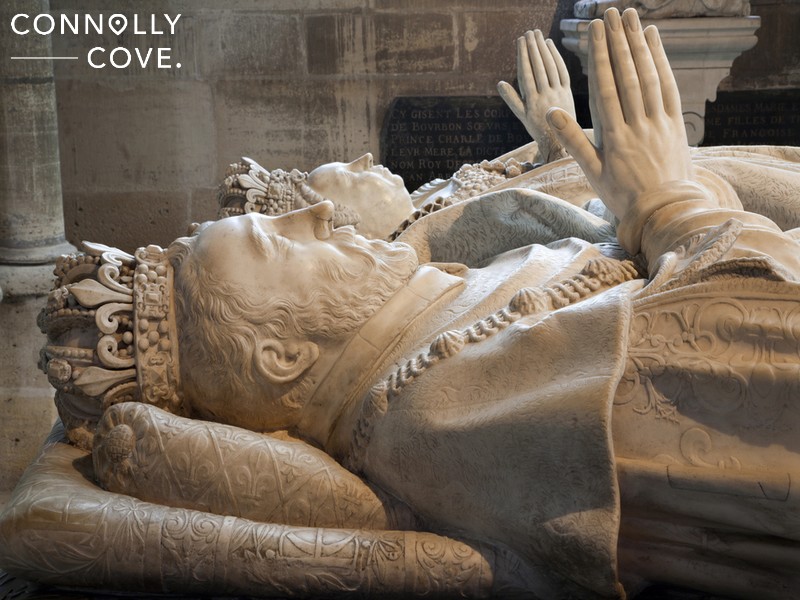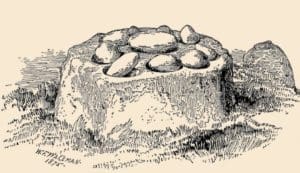Catherine de Medici: the History of the Mother of France and Influential Ruler

Updated On: February 19, 2024 by Aya Radwan
The complex tapestry of French history is a daunting maze. France’s history brings us tales of kings, queens and legendary heroes. French queens have had a significant impact on French and global history as they helped shape the political and social scenes in the continent. The captivating life and legacy of one formidable Queen of France who held her own in a time dominated by men was Catherine de Medici.
This piece aims to take us beyond mere facts and old tales to shed light on Catherine’s riveting journey from Italian nobility all the way to wielding power over the French monarchy as Queen Consort and Regent. Hold onto your hats, we’re plunging headlong into an exhilarating world of mystery, art, religious conflicts, Renaissance and French royalty.
Who was Catherine de Medici?

Catherine de Medici comes from the Italian noble family, Medici, who were the Pope’s bankers and had extensive influence in Florence. Catherine was Giovanni de Medici’s great-granddaughter and was born in the first quarter of the 16th century in the Republic of Florence. She led a difficult life after the death of her parents, only a month after her birth, and she had to live with her maternal grandmother and then aunt. As the tides turned against the Medici family, Catherine parted with her family. She was sent to live in a convent until Charles Habsbury, the Holy Roman Emperor summoned her to Rome, where she lived afterwards.
Catherine de Medici: Life and Legacy
Catherine de Medici had a fascinating life and left a lasting legacy as the Queen of France and an influential ruler.
Early Life and Marriage
Catherine suffered greatly after the turmoil she went through with the diminishing Medici rule in Florence and the ousting of the family from the rule. In her early years and after her parents’ deaths, Pope Leo refused to let Catherine travel to and stay in France under the watchful eye of King Francis I. The Pope made her the Duchess of Urbino, but soon after his death and the assignment of the new Pope, Pope Clement VII, the Medici lost their power.
Cardinal Silvio Passerini’s followers revolted against the Pope, took Catherine de Medici as a hostage, and sent her to one convent after another. However, Catherine shared that her years at the last convent, Santissima Annuziata delle Murate, were the best of her life.
Clement made a deal with Charles of Habsburg to make him the Holy Roman Emperor in exchange for his help in retaking Florence. After the city surrendered in 1530, Clement was able to summon Catherine to Rome to grow under his eyes until he found her a suitable suitor. Historians describe young Catherine as an intelligent lady with great love and understanding of the arts. Catherine received many suitors, but the most prominent of all was King Francis I, who asked for her hand in marriage to his son, Henry II, the Duke of Orleans.
At only the age of 14, Henry and Catherine wed at the end of 1533. Now that Catherine became a princess, her duties and obligations in the French court began right away. Unfortunately, Henry didn’t love his new wife, and instead, he took one mistress after another until he fell in love with Diane de Poitiers, who was double his age and vowed to love her for the rest of his life. Nothing made Henry love Catherine, not even after producing three heirs following ten years of infertility.
Catherine de Medici as Queen of France

Catherine de Medici was the French Queen and often referred to as Mother of France after her husband’s reign as dauphin, then King of France, from 1533 until his death in 1559. Henry greatly favoured his mistress over Catherine and worked on diminishing his wife’s authority in the French court. Catherine acted as regent during her husband’s absences. The relationship between Catherine and Diane was documented in several works. Still, the Queen Mother never forgot how her husband preferred his mistress over her, banished her after Henry II’s death, and forced her to give up Chenonceau Chateaux and the crown jewels.
In 1559, at their daughter’s wedding to Philip II of Spain, Henry II participated in the jousting event against the Comte de Montgomery, Gabriel and unfortunately lost the joust and nearly lost his life. Ten days after Henry II’s injury in the event, he lost his life, and Catherine wore black in mourning while Diane kept away for fear of the Queen. After the death of her husband, Catherine became Queen regent for her elder son’s reign, Francis II, who by then had been married to Mary, Queen of Scots.
Catherine de Medici: How the Queen Mother Influenced the Reigns of Her Sons

After a decade of suspicions about the new dauphine’s ability to bear children, Catherine bore their first child, Francis II. Nearly a year later, his brother Charles IX was born, and Catherine and Henry II’s lineage ended with their third son, Henry III. When Henry II died in 1559, young Francis found himself the dauphin, much in limbo from his adolescence. However, it was Catherine de Medici’s best chance to pull the reigns after her husband’s death, and Catherine was an example of a firm Queen Mother.
The Queen Mother and the Reign of Francis II
Young Francis II ruled as King for nearly one year from 1559 to 1560. This year was one full of turmoil, power struggles and religious persecution. Although Catherine alienated herself from her elder son’s court, he mentioned her name whenever he wrote official letters or agreements, which incentivised his mother to find a way to intervene. Soon enough, Catherine de Medici sympathised with the Protestants and collaborated with the Guises when necessary.
It wasn’t long before Catherine had to make new political deals when Francis II fell sick and was on his deathbed. She made a deal with Antoine de Bourbon to release his brother Louis and forsake his life in exchange for Antoine foregoing his right to be Charles IX’s regent, which Antoine agreed on. When Francis died, Catherine was appointed governor to reside over the matters of the French kingdom because Charles IX was only ten years old.
The Queen Mother and the Reign of Charles IX
This era entangled Catherine de Medici in its political and religious dilemma. The water was boiling between the Catholics and Protestants, nobles were each claiming power within their reach, and the political divide proved incomprehensible to Catherine. Despite making decisions in numerous aspects, the Queen Mother couldn’t reign in the country, especially after the Massacre of Vassy. This atrocious massacre of innocent Huguenots sparked the French Wars of Religion. The French kingdom spent thirty years in turmoil, fluctuating between civil unrest and armed truces.
Despite her initial policy of tolerance towards the Huguenots, Catherine sought a more vengeful approach towards them after their attempt on Charles IX’s life in 1567, in what is known as the Surprise of Meaux. The remaining years of Charles IX’s reign remained full of turmoil, hopeful alliances and political marriages as Catherine attempted to control the country’s religious sides.
Saint Bartholomew’s Day Massacre
Three days after the marriage of her daughter Margaret to the Huguenot Henry III of Navarre, Admiral Coligny, a renowned Huguenot leader during the country’s Religious Wars, was fatally shot. Although Coligny survived, the bullet wounded his arm and caused the amputation of one of his fingers; Catherine and court advisors expected a Huguenot uprising to avenge their leader. Historians declare their belief that Catherine de Medici was behind Charles IX’s famous statement about killing all Huguenot leaders. This atrocious event branded Catherine as the Wicked Italian Queen and a Machiavellian.
The Queen Mother and the Reign of Henry III
After his mother’s plea, Henry III abandoned his role as the Polish King to assume the French throne. He was the healthiest of his brothers, though he had weak lungs and little interest in state affairs. Henry III depended greatly on his mother and secretaries to run the country while he engaged in more pious acts such as pilgrimages. Like his father, Henry was uncontrollable, and Catherine feared the political turmoil her son was putting the country through with the negligence of his duties. She tried to persuade the people to heed the King’s words and attempted to make peace with Huguenot.
During Henry III’s reign, his younger brother, Francis, the Duke of Alençon, caused many riots in the French court and eventually died of consumption, a lung disease in 1584. Margaret was banished from her marriage to Navarre and from the French court for her continuous infidelities and the disgrace she brought upon the Valois bloodline. The public began to praise her again, but Henry III ruined everything when he dismissed all his ministers and had the Duke of Guise and several members of his family killed. At the time, Catherine was sick in bed and eventually died in January 1589.
Catherine de Medici’s Legacy in French Arts and Culture

Catherine de Medici drew inspiration from King Francis I, who greatly appreciated the arts. Her artistic patronage program fostered the creation of artistic masterpieces for thirty years. When a gallery was set after Catherine’s death of her collection, incredible works such as tapestries, scriptures, hand-drawn maps, luxurious fabrics, portraits by Jean Clouet, François Clouet, Jean Cousin the Younger and paintings by Antoine Caron.
Catherine also loved performing arts, where she employed only the best artists and actors to stage thrilling and musical shows. Some even credit Catherine with the invention of ballet de cour, the basis for modern-day ballet, after the modifications she requested changes in the dancing parts of her musical shows.
Catherine de Medici’s Influence extended to the architectural scene in the French capital. As a descendant of the Medicis, she brought a new meaning to the Renaissance architectural style. She ordered several modifications to existing chateaux, such as Château de Saint-Maur and ordered the building of others, such as the Hôtel de la Reine. Unfortunately, after her death, the French state redirected funds to other aspects of the country, and Catherine de Medici’s patronage of arts withered away, along with the Valois bloodline.
Catherine de Medici’s Culinary Interests
Food historians contradict popular culture regarding Catherine de Medici’s introduction of Italian cuisine, cutlery and cooking techniques into French cuisine. In fact, these historians attribute this revolution to King Francis I, who loved fine Italian dining, and the Italians loved him so much that a large number of their nobles attended the wedding of Catherine’s Italian father and French mother. The historians further add that Henry II’s undermining of Catherine’s power at court influenced her ability to introduce anything to the people. However, popular culture mentions Catherine as the introducer of forks and several culinary influences from Italy to France.
Myths and Misconceptions about Catherine de Medici
The most famous myth about Catherine de Medici is her involvement with the occult and witchcraft. Although dramatised works greatly entertained this myth, there’s no historical evidence to prove it. Catherine was highly educated in astronomy and astrology, which were closely interconnected at the time. Some even suggested that Catherine’s infertility for ten years was unnatural to a woman’s sacred mission of bearing life.
Another misconception is that she was solely responsible for the St. Batholomew’s Day Massacre. While Catherine did play a role in the events leading up to the massacre, it was ultimately carried out by others in the French court. One more misconception was that Catherine was a heartless and power-hungry queen. Catherine had to navigate a complex and male-dominated political and social landscape.
Catherine de Medici’s legacy might not be all flowers or tombstones. Still, she was a powerful Queen who exercised all her powers to ensure her beloved Henry’s and her children’s safety, as would any mother, while navigating the intricate French political scene and fighting the French nobility who saw her Valois bloodline unworthy of the crown.
Catherine de Medici in Popular Culture
Have you watched two of the most acclaimed TV shows, Medici and Reign? The former bears the same name as our Queen, Medici, while the latter depicts Catherine on screen and her life in the French court.
Reign
Through several seasons, we see Queen Catherine de Medici as she attempts to hold the French court with an iron fist. The show focuses on Mary, Queen of Scots’s life in the French court, but it also gives us an inside look into Catherine’s. Disgusted by her husband, King Henry II, the King of France’s affair with Diane de Poitiers, Catherine had her hands full. She tried to dissuade the King of France from his unreasonable relationship while employing magic and mysteries of the unknown to protect the French monarchy. Reign shows Catherine’s role in her sons’ lives, Francis II, Charles IX, and Henry III. This show is highly fictional, and watch it just for entertainment, not historical accuracy.
Medici: The Pope’s Bankers
Although Medici has historical errors and discusses the life of Cosimo de Medici, the show starts with Catherine’s great-grandfather, Giovanni de Medici. Catherine is Giovanni’s great-granddaughter from his son Lorenzo’s side. The show shows how Catherine’s family started and their wealth and power in Europe. We don’t see Catherine in the show, but it’s a good place to start if you like historical fiction.
Catherine de Medici’s life is too grand for one article. The Mother of France’s significant impact on her country’s history as Queen consort and regent shaped the reigns of her sons and enriched France’s Renaissance arts and cultural movement.
FAQs
Was Catherine de Medici from a royal family?
Yes, she was part of one of the Italian ruling families known as the Florentine nobility before becoming European royalty through royal marriages.
Why is Catherine de Medici called the Serpent Queen?
Catherine played vital roles during the reigns of her sons, where she, at times, was the sole decision-maker, such as during the reign of Henry III. She had to use wit and manipulation to achieve what she wanted or saw fit.
How was Catherine de Medici Machiavellian?
Many historians accuse Catherine of being Machiavellian after the St. Bartholomew’s Day Massacre. They allege that while she didn’t give the order herself, she’d influenced Charles IX’s thinking of giving the unthinkable order.
What languages did Catherine de Medici speak?
As she went from one convent to another, finally settling in the Murate Convent, Catherine learnt Greek and Latin until she became fluent.
What did Catherine de Medici invent?
While many debate her culinary influence on France, Catherine introduced handkerchiefs, ladies’ drawers, the folding fan and, most interestingly, tobacco to the French kingdom.






